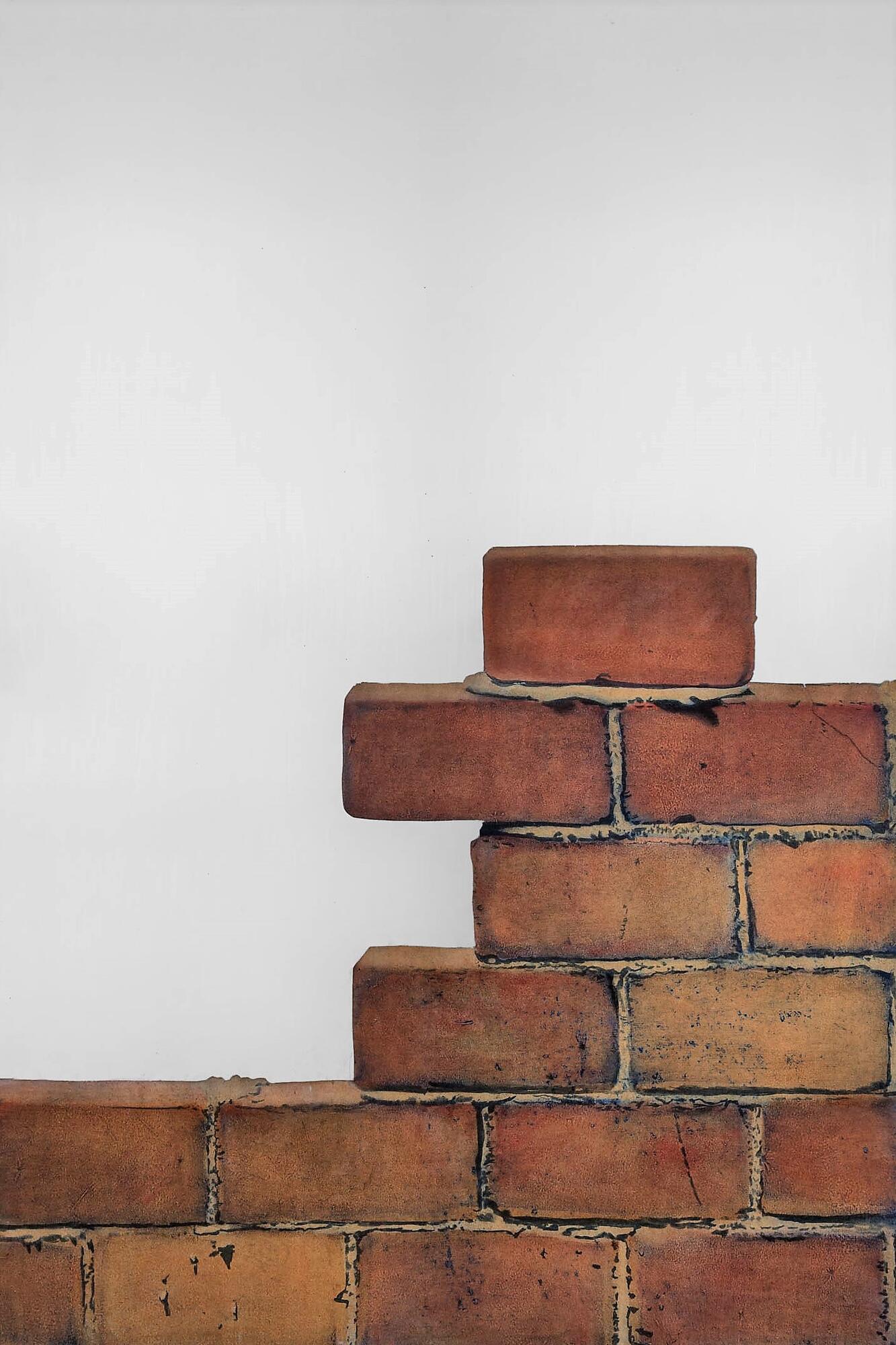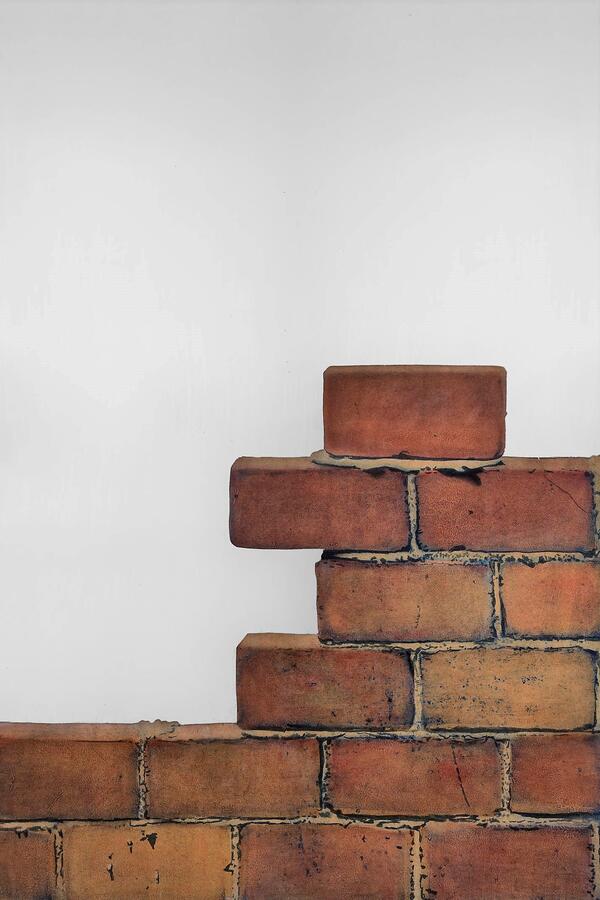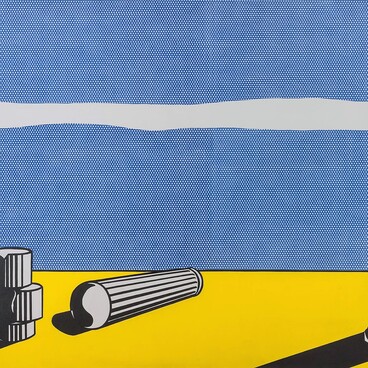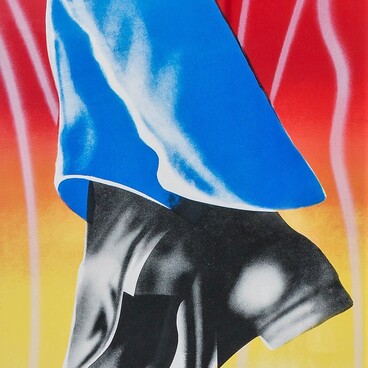Michelangelo Pistoletto was born in 1933 into a family of the painter Ettore Pistoletto. A year later, the family moved to Turin, where Ettore Pistoletto opened a restoration workshop. As a child, Michelangelo studied the fundamentals of drawing and painting, as well as learned restoration methods from his father. On Sundays, he frequented the Sabauda gallery to explore the works exhibited there.
From 1947 until 1958, Pistoletto worked in his father’s restoration workshop in Turin. During that time, he started painting figurative works and self-portraits. Michelangelo Pistoletto’s artwork is based on the combination of high art and everyday life.
In 1960, Pistoletto had his first solo show at Galleria Galatea in Turin. In 1967, he began participating in the Arte Povera (literally Poor Art) exhibitions, which later brought him fame. Pistoletto is considered one of the main representatives of this trend.
The term Arte Povera was introduced in 1967 by an art critic Germano Celant to denote a movement that united artists of Rome, Milan, Turin and Genoa of the second half of the 1960s and the 1970s. Arte Povera has become a new era in Italian art. Its representatives challenged the value of the established culture and renounced everything beautiful, considering the best examples of world culture to be compromised and depreciated. Arte Povera artists visualized the connection between nature and industry by using raw or non-artistic materials, and they also strove to lift the boundaries of traditional art forms. The movement existed from 1960 to 1979. Ironically enough, Arte Povera works are now housed by the world’s leading museums, which the artists longed to escape from.
In the 1960s, Pistoletto began creating silkscreen prints on mirrored polished metal surfaces. Pistoletto often used full-length human figures for his installations to create the effect of including the viewers in his works.
The museum houses Pistoletto’s composition called “Wall”, which represents the typical artist’s approach of using neat and contrasting processing of textures, and fragments to signify the whole, creating a figurative metaphor of the modern world. The slightly uneven mirror effect visually introduces the viewers into the dynamic space of the image.
This work becomes a kind of postmodern homage to the famous tradition that goes back to mirror-depicting paintings by Jan Van Eyck, Titian, Francisco Goya, Édouard Manet and other artists.
From 1947 until 1958, Pistoletto worked in his father’s restoration workshop in Turin. During that time, he started painting figurative works and self-portraits. Michelangelo Pistoletto’s artwork is based on the combination of high art and everyday life.
In 1960, Pistoletto had his first solo show at Galleria Galatea in Turin. In 1967, he began participating in the Arte Povera (literally Poor Art) exhibitions, which later brought him fame. Pistoletto is considered one of the main representatives of this trend.
The term Arte Povera was introduced in 1967 by an art critic Germano Celant to denote a movement that united artists of Rome, Milan, Turin and Genoa of the second half of the 1960s and the 1970s. Arte Povera has become a new era in Italian art. Its representatives challenged the value of the established culture and renounced everything beautiful, considering the best examples of world culture to be compromised and depreciated. Arte Povera artists visualized the connection between nature and industry by using raw or non-artistic materials, and they also strove to lift the boundaries of traditional art forms. The movement existed from 1960 to 1979. Ironically enough, Arte Povera works are now housed by the world’s leading museums, which the artists longed to escape from.
In the 1960s, Pistoletto began creating silkscreen prints on mirrored polished metal surfaces. Pistoletto often used full-length human figures for his installations to create the effect of including the viewers in his works.
The museum houses Pistoletto’s composition called “Wall”, which represents the typical artist’s approach of using neat and contrasting processing of textures, and fragments to signify the whole, creating a figurative metaphor of the modern world. The slightly uneven mirror effect visually introduces the viewers into the dynamic space of the image.
This work becomes a kind of postmodern homage to the famous tradition that goes back to mirror-depicting paintings by Jan Van Eyck, Titian, Francisco Goya, Édouard Manet and other artists.



